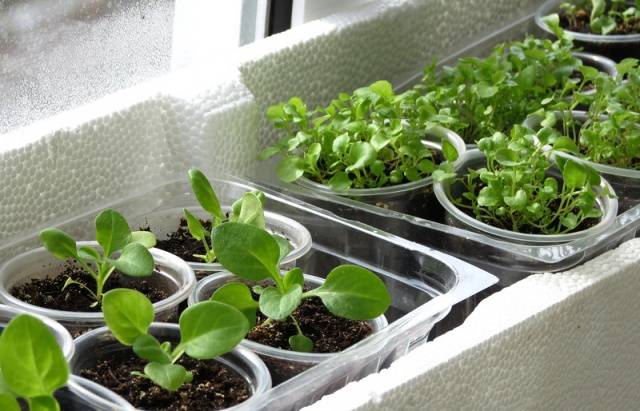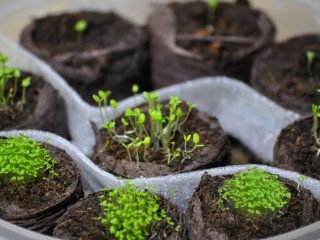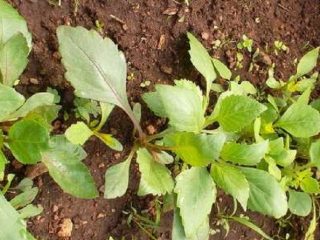Content
Not only tall flowers with large inflorescences look elegant and are worthy of becoming a flowerbed decoration. Small, but abundant and bright blooms look no less presentable - a sort of weightless cloud of delicate flowers. Lobelia is one of these flowers, increasingly appearing on balconies and flower beds in all corners of the country. The ampelous lobelia, which is a universal “tool” for designers, deserves special attention: it is beautiful in hanging plant pots and balcony boxes, and is suitable for decorating flowerpots, pots and landscape compositions. Everything about lobelia is wonderful, but the difficulty lies in growing this flower.
Planting and caring for ampelous lobelia, with photo and video instructions, will be discussed in this article. All stages of growing flowers will be described in detail here: from seeds and seedlings to planting in a permanent place and care rules.
How to choose a variety
Lobelia came to Europe from North America and southern Africa. Today this flower is widespread; it grows on almost all continents of the earth. Botanists classify lobelia as a member of the Bellflower family, identifying more than three hundred species of this plant.
There are several varieties of this plant, differing primarily in the height of the shoots and the shade of the inflorescences. Most often, domestic flower growers grow:
- Lobelia bush (or Erinus), which grows in low balls covered with a large number of small flowers;
- ampelous variety, the bushes of which are looser and more climbing; there are not as many inflorescences on them as on Erinus.
Bush lobelia is suitable for planting in flower beds and various landscape compositions (on an alpine hill, for example). But hanging varieties will decorate hanging plant pots, balcony boxes, window sills, and are suitable for growing in flowerpots and pots.
Growing a hanging variety is somewhat more difficult than a bush variety. She is more whimsical and often dies due to improper care. Practice shows that the most persistent are those types of ampelous lobelia whose inflorescences are blue-blue in color. The white variety germinates more slowly and develops less well, but is also quite suitable for beginning gardeners. But it is better to avoid the purple or lilac varieties - they are very capricious and rarely produce abundant flowering.
The appearance of ampelous flowers is very characteristic:
- stems branched, angular;
- shoots have a reddish tint;
- stems drooping, reaching a length of 50-60 cm;
- leaves are shiny, dark green, small, lanceolate;
- inflorescences are two-lipped, small in size.
Growing from seeds
The development of lobelia seedlings is a long process, taking from 2.5 to 3 months. Therefore, it is necessary to sow flower seeds in advance - starting in mid-winter. To determine a more accurate planting time, you need to decide whether there will be artificial lighting for seedlings.
The fact is that with a lack of light, lobelia sprouts become thinner, the seedlings “sit still”, slow down in development, and can develop “blackleg”. Lobelia sown in February will have to be illuminated with fluorescent lamps. Seeds sown in March or even April will quickly sprout, and the seedlings will catch up with the February seedlings, and perhaps even outstrip them in development.
Flower seedlings
The first thing a gardener must take into account is the size of the seeds. Lobelia seeds are very small, so it will not be possible to separate them - planting will be in groups.
Now you need to choose a container for flower seedlings. Suitable shallow plastic containers, wide bowls or plates, seedling cassettes with trays, peat tablets or cups, candy or egg containers.
The soil for seedlings of these flowers needs peat soil, which is not very nutritious. Both purchased soil and home-made soil will do. The homemade substrate must be disinfected by pouring boiling water with several manganese crystals.
When the soil has cooled, you can begin sowing the seeds of ampelous lobelia. You can do this in several ways:
- Mix dusty flower seeds with sand and distribute them evenly over the entire area of the container, as if “salting” the soil.
- Take a toothpick, moisten it in water and, dipping it into the seeds, grab 5-10 grains at a time.
- Buy lobelia seeds in a multidrag - a shell containing 5-10 flower seeds at once. Distribute large dragees over the surface of the soil or put a couple of “grains” in an individual cup (tablet).
The florist must understand that lobelia is planted only in groups in the ground or in flowerpots. That’s why they pick this flower in small bunches of 5-10 seedlings or try to immediately plant seedlings in groups.
All that remains is to cover the container with flower seeds with a transparent lid: plastic, film, glass or polycarbonate. Place lobelia in a warm place until shoots emerge.
Caring for flower seedlings
Growing from seeds is a labor-intensive and time-consuming process. Only after a couple of weeks will the lobelia sprout. Until this happens, you need to remove the lid from the container twice a day and wipe it from condensation. Let the seedlings ventilate for 10-20 minutes, and then return the lid to its place.
When all the sprouts have sprouted, you can completely remove the cover. But it is better to do this gradually, gradually increasing the ventilation time - this way the lobelia seedlings will harden and become stronger.
The root system of lobelia is small and superficial, while young seedlings have even microscopic roots. This is why watering is so important for seedlings of these flowers.As soon as the soil seems dry, you should immediately water the seedlings with warm water. You can water from above or through a tray.
Ampelous lobelia does not like abundant nutrition, so it is enough to feed the seedlings once at one month of age. You can use a mineral complex for flowers by first dissolving the fertilizer in water (the proportion should be two to three times less than that indicated on the package).
When the temperature on the balcony or outside reaches 10-15 degrees Celsius, you can take the flower seedlings out for walks. The time the flowers spend outdoors is gradually increased, and eventually the boxes with lobelia are left for the whole day, and then overnight.
Picking up seedlings
Lobelia ampelous can be grown with or without diving. It is not necessary to plant flowers grown in tablets, cassettes or small cups. But when sowing seeds in a common container, picking cannot be avoided.
Neighboring flower sprouts are intertwined not only with roots, but also with stems and leaves, so you need to pick lobelia early - at the stage of two or three true leaves. Flowers bloom in bunches, each with 5-10 plants.
The root system of lobelia is tenacious and is not afraid of mechanical damage, so the soil in a common container with flowers can simply be cut into equal pieces with a sharp knife.You can also separate groups of flowers with a teaspoon or the back of a fork, a wooden spatula and other available means.
After transferring the lobelia sprouts into an individual container, sprinkle them with soil and compact it slightly; now you can water the flowers with warm water.
Planting flowers in the ground and caring for them
Planting and caring for lobelia in open ground or in flowerpots is no less labor-intensive than growing seedlings. Flowers are planted in bunches, leaving about 15-25 cm between groups. In a month, the bushes will grow so much that the balls of neighboring flowers will merge into a solid carpet.
A place for hanging lobelia is chosen in partial shade or on the north side of the house. The scorching sun can instantly kill these delicate flowers, so it is recommended to shade them.
Caring for lobelia is as follows:
- Frequent and abundant watering to prevent the soil from drying out.
- Soil drainage, which will not allow moisture to stagnate at the roots of flowers.
- Fertilizing with mineral fertilizers without nitrogen content. For abundant flowering, it is recommended to use potassium sulfate.
- In mid-summer, when the lobelia has faded, its stems are trimmed, leaving only 5-10 cm. After a couple of weeks, the bush will grow and begin to bloom again.
- Due to the heat, the plant may begin to dry out, then you will have to pick off the yellowed leaves and inflorescences.
There is nothing complicated in caring, it’s just that lobelia cannot be left unattended for a long time - every day it needs the participation of a gardener.
Conclusion
Ampelous lobelia is very impressive: delicate clouds of tiny flowers, painted in pastel shades.
This is not to say that this flower is very capricious or too whimsical, it’s just that lobelia needs constant attention from the gardener and regular watering. The biggest challenge is growing flower seedlings from seeds, but this task can be overcome with a little patience and time.























